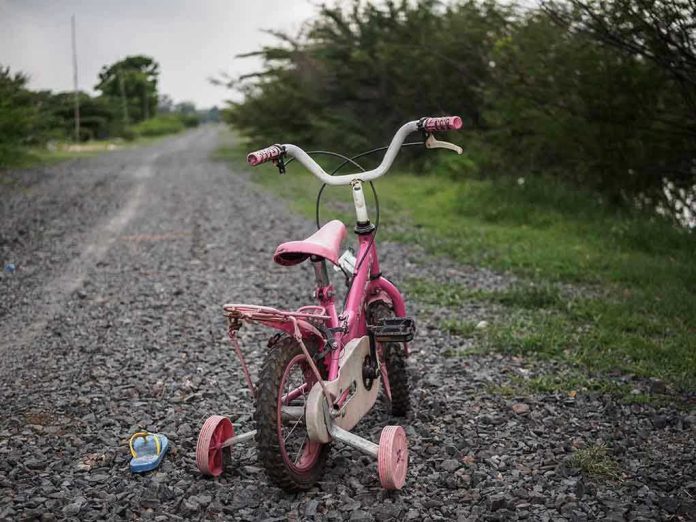
Britain’s child protection crisis isn’t hiding in the shadows—it’s right in front of us, as over 2,000 trafficked and lone child asylum seekers have vanished from UK councils’ care, exposing a system that can’t keep its most vulnerable safe.
Story Snapshot
- More than 2,000 trafficked and unaccompanied children are missing from UK care, despite years of warnings.
- Policy gaps, funding shortages, and incomplete reforms have left children exposed to exploitation, re-trafficking, and lifelong harm.
- Government pledges to expand specialist support, but progress is slow and many children remain at risk.
- Public trust in child protection and immigration systems is being eroded as the problem persists.
Thousands Missing: A National Failing That Won’t Stay Quiet
Over 2,000 children, identified as victims of trafficking or as lone asylum seekers, have gone missing from local authority care across the UK—a figure that shocks because it signals more than simple oversight. These are not nameless statistics. Each missing child represents a catastrophic failure in the nation’s duty to protect. Child protection organizations and policymakers have watched the numbers climb, despite repeated policy papers and solemn pledges. The scale is unprecedented, and the consequences are harrowing: exploitation, repeat trafficking, and a cycle of harm that can haunt children for a lifetime.
Most of these disappearances have happened in plain sight, inside a system designed to safeguard. Reports from ECPAT UK and Missing People have tracked the numbers since 2021, painting a bleak picture of systemic neglect. By 2024, more than 4,240 child trafficking victims were considered for immigration relief, yet over 2,000 had simply vanished from care—leaving authorities scrambling for answers and families facing unimaginable uncertainty. The drumbeat of missing cases has become a grim, predictable refrain in annual reports, not a statistical anomaly but a chronic institutional wound.
Why Are So Many Children Vanishing?
The roots of this crisis run deep, tangled in policy, funding, and the hard realities of the UK’s approach to child protection and immigration. Local authorities shoulder the responsibility for thousands of vulnerable children, but chronic underfunding and fragmented services have left them unable to provide stable, secure placements. In 2017, the government introduced the Independent Child Trafficking Guardianship (ICTG) Service in hopes of offering specialist advocacy. Eight years later, that service still doesn’t reach every council, leaving critical gaps in protection. For 16- and 17-year-olds, the policy of placing them in “supported accommodation” rather than regulated care homes has proved disastrous, increasing their vulnerability to traffickers and abusers.
Children in care, especially those trafficked or seeking asylum alone, are caught in a web of fear—uncertainty over immigration status, dread of deportation, and relentless targeting by traffickers. Local authorities, stretched thin, struggle to offer the safety and continuity these children desperately need. The result: a steady flow of missing children, with little improvement despite headline-grabbing government announcements and fleeting bursts of public outrage.
Who Should Be Protecting These Children—and Why Aren’t They?
Responsibility for these children is scattered across multiple agencies, each with different priorities and pressures. Local authorities are legally bound to safeguard every child in their care, but resource constraints and competing demands mean some cases slip through the cracks. The Home Office, which sets immigration and trafficking policy, has faced criticism for prioritizing border control over child welfare. Charities like ECPAT UK, Missing People, and the Independent Anti-Slavery Commissioner have become the sector’s conscience, repeatedly warning of urgent risks and demanding systemic reform.
Power sits unevenly. Local councils are on the front lines, but ministers in Whitehall pull the policy levers. NGOs act as watchdogs and advocates, their influence growing as public frustration mounts. Parliamentary committees and advocacy groups now push for accountability, but progress is slow, and the children keep disappearing.
Promises, Policy, and the Chasm of Action
Government responses have followed a familiar script: acknowledge the crisis, promise reform, and announce incremental expansions of support. In 2025, ministers committed to a national rollout of the ICTG Service, aiming to provide specialist help in every local authority. There have been pledges of increased funding and more children’s homes, yet the pace of change remains glacial. Many children are still housed in unsuitable, unregulated accommodation, and the ICTG Service is not yet fully operational nationwide.
The consequences are immediate and severe. Missing children face a heightened risk of exploitation, abuse, and re-trafficking. For those who are found, the trauma endures. For the public, each new disappearance erodes trust in the very systems meant to protect. For policymakers, the mounting numbers and persistent failures have turned a humanitarian crisis into a political flashpoint. The cost isn’t just counted in lost childhoods, but in social cohesion, public confidence, and the nation’s moral standing.
Sources:
UK Home Office, “Independent Child Trafficking Guardianship (ICTG) Service” (2025)
UK Home Office, “Find a Tender: ICTG Service National Rollout” (2025)
ECPAT UK, “One in three trafficked children go missing from local authority care”













